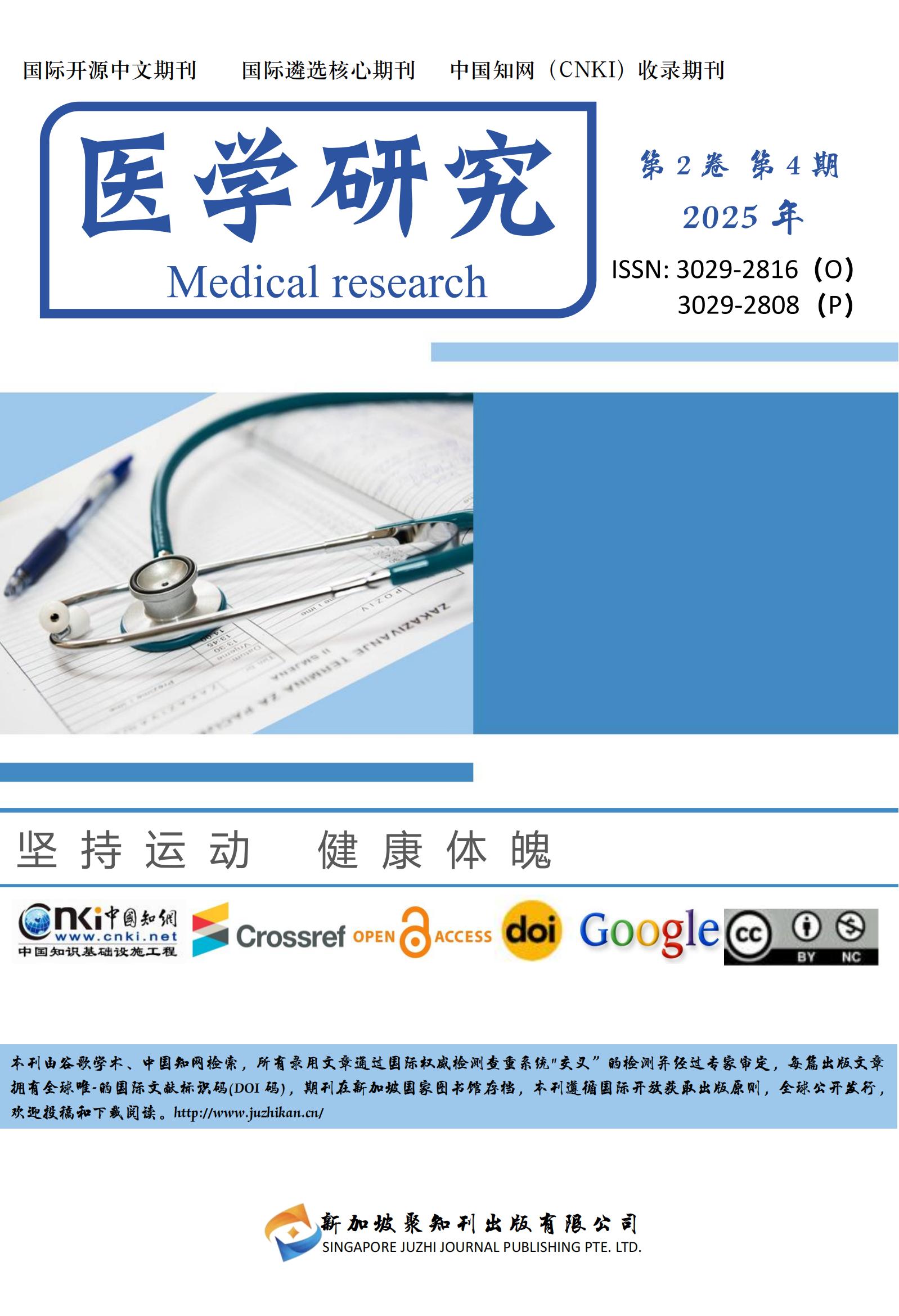
 info@juzhikan.asia
info@juzhikan.asia
 info@juzhikan.asia
info@juzhikan.asia
重庆医科大学,重庆,400016;
摘要:细胞死亡作为维持机体稳态的核心机制,其形式与调控网络持续拓展。近年来,基于代谢组学与细胞生物学交叉研究,双硫死亡(Disulfidptosis)作为一种新型程序性细胞死亡方式被揭示,其发生机制与硫代谢异常密切相关。该过程由SLC7A11高表达或葡萄糖缺乏引发的胱氨酸异常积累驱动,导致细胞内二硫键应激,促使F-肌动蛋白丝间形成异常交联,最终引发细胞骨架瓦解与膜结构崩解。研究表明,双硫死亡在肿瘤细胞中呈现显著的代谢依赖性,尤其与硫代谢失衡及氧化还原稳态紊乱存在深层关联。靶向SLC7A11与葡萄糖代谢的联合干预策略(如GLUT1抑制剂BAY-876)在肾癌、乳腺癌等模型中展现出选择性杀伤效应,但其临床应用仍受限于肿瘤异质性、代谢可塑性及正常组织毒性。进一步研究发现,氧化还原通路与细胞骨架动力学调控网络通过正反馈机制影响双硫死亡进程,提示多通路协同靶向的重要性。未来研究需整合多组学技术解析双硫死亡与其他死亡模式的交互作用,并开发基于肿瘤微环境代谢特征的精准干预策略。双硫死亡的发现不仅丰富了细胞死亡理论体系,也为肿瘤代谢治疗提供了全新的分子靶点与转化方向。
关键词:双硫死亡;硫代谢;半胱氨酸;SLC7A11;肿瘤治疗
参考文献
[1]Dejas L, Santoni K, Meunier E, Lamkanfi M. Regulated cell death in neutrophils: From apoptosis to NETosis and pyroptosis. Semin Immunol. 2023 Nov;70:101849.
[2]Galluzzi L, Vitale I, Aaronson SA, Abrams JM, Adam D, Agostinis P, et al. Molecular mechanisms of cell death: recommendations of the Nomenclature Committee on Cell Death 2018. Cell Death Differ. 2018 Mar;25(3):486–541.
[3]Rao Z, Zhu Y, Yang P, Chen Z, Xia Y, Qiao C, et al. Pyroptosis in inflammatory diseases and cancer. Theranostics. 2022;12(9):4310–29.
[4]Tsvetkov P, Coy S, Petrova B, Dreishpoon M, Verma A, Abdusamad M, et al. Copper induces cell death by targeting lipoylated TCA cycle proteins. Science. 2022 Mar 18;375(6586):1254–61.
[5]Dixon SJ, Lemberg KM, Lamprecht MR, Skouta R, Zaitsev EM, Gleason CE, et al. Ferroptosis: an iron-dependent form of nonapoptotic cell death. Cell. 2012 May 25;149(5):1060–72.
[6]Li C, Sun C, Li Y, Dong L, Wang X, Li R, et al. Therapeutic and prognostic effect of disulfidptosis-related genes in lung adenocarcinoma. Heliyon. 2024 Jul 15;10(13):e33764.
[7]Wasmund K, Mußmann M, Loy A. The life sulfuric: microbial ecology of sulfur cycling in marine sediments. Environ Microbiol Rep. 2017 Aug;9(4):323–44.
[8]Townsend DM, Tew KD, Tapiero H. Sulfur containing amino acids and human disease. Biomed Pharmacother. 2004 Jan;58(1):47–55.
[9]Wagner C, Decha-Umphai W, Corbin J. Phosphorylation modulates the activity of glycine N-methyltransferase, a folate binding protein. In vitro phosphorylation is inhibited by the natural folate ligand. J Biol Chem. 1989 Jun 5;264(16):9638–42.
[10]Francioso A, Baseggio Conrado A, Mosca L, Fontana M. Chemistry and Biochemistry of Sulfur Natural Compounds: Key Intermediates of Metabolism and Redox Biology. Oxid Med Cell Longev. 2020 Sep 29;2020:8294158.
[11]Zhang HF, Geltink RIK, Parker SJ, Sorensen PH. Transsulfuration, minor player or critical for cysteine homeostasis in cancer. Trends Cell Biol. 2022 Sep;32(9):800–14.
[12]Kabil O, Vitvitsky V, Banerjee R. Sulfur as a Signaling Nutrient Through Hydrogen Sulfide. Annu Rev Nutr. 2014;34:171–205.
[13]Combs JA, DeNicola GM. The Non-Essential Amino Acid Cysteine Becomes Essential for Tumor Proliferation and Survival. Cancers (Basel). 2019 May 16;11(5):678.
[14]Harris IS, Treloar AE, Inoue S, Sasaki M, Gorrini C, Lee KC, et al. Glutathione and thioredoxin antioxidant pathways synergize to drive cancer initiation and progression. Cancer Cell. 2015 Feb 9;27(2):211–22.
[15]Allocati N, Masulli M, Di Ilio C, Federici L. Glutathione transferases: substrates, inihibitors and pro-drugs in cancer and neurodegenerative diseases. Oncogenesis. 2018 Jan 24;7(1):8.
[16]Hayes JD, Dinkova-Kostova AT, Tew KD. Oxidative Stress in Cancer. Cancer Cell. 2020 Aug 10;38(2):167–97.
[17]Stipanuk MH, Dominy JE, Lee JI, Coloso RM. Mammalian cysteine metabolism: new insights into regulation of cysteine metabolism. J Nutr. 2006 Jun;136(6 Suppl):1652S-1659S.
[18]Conrad M, Sato H. The oxidative stress-inducible cystine/glutamate antiporter, system x (c) (-) : cystine supplier and beyond. Amino Acids. 2012 Jan;42(1):231–46.
[19]Kandasamy P, Gyimesi G, Kanai Y, Hediger MA. Amino acid transporters revisited: New views in health and disease. Trends Biochem Sci. 2018 Oct;43(10):752–89.
[20]Liu X, Nie L, Zhang Y, Yan Y, Wang C, Colic M, et al. Actin cytoskeleton vulnerability to disulfide stress mediates disulfidptosis. Nat Cell Biol. 2023 Mar;25(3):404–14.
[21]Xiao F, Li HL, Yang B, Che H, Xu F, Li G, et al. Disulfidptosis: A new type of cell death. Apoptosis. 2024 Oct;29(9–10):1309–29.
[22]Zheng P, Zhou C, Ding Y, Duan S. Disulfidptosis: a new target for metabolic cancer therapy. Journal of Experimental & Clinical Cancer Research : CR. 2023 Apr 27;42:103.
[23] TeSlaa T, Ralser M, Fan J, Rabinowitz JD. The pentose phosphate pathway in health and disease. Nat Metab. 2023 Aug;5(8):1275–89.
[24]Ren Y, Chen J, Chen P, Hao Q, Cheong LK, Tang M, et al. Oxidative stress-mediated AMPK inactivation determines the high susceptibility of LKB1-mutant NSCLC cells to glucose starvation. Free Radic Biol Med. 2021 Apr;166:128–39.
[25]Wang YT, Trzeciak AJ, Rojas WS, Saavedra P, Chen YT, Chirayil R, et al. Metabolic adaptation supports enhanced macrophage efferocytosis in limited-oxygen environments. Cell Metab. 2023 Feb 7;35(2):316-331.e6.
[26]Njeim R, Alkhansa S, Fornoni A. Unraveling the Crosstalk between Lipids and NADPH Oxidases in Diabetic Kidney Disease. Pharmaceutics. 2023 Apr 28;15(5):1360.
[27]Jomova K, Raptova R, Alomar SY, Alwasel SH, Nepovimova E, Kuca K, et al. Reactive oxygen species, toxicity, oxidative stress, and antioxidants: chronic diseases and aging. Arch Toxicol. 2023 Oct;97(10):2499–574.
[28]Kang L, Wang D, Shen T, Liu X, Dai B, Zhou D, et al. PDIA4 confers resistance to ferroptosis via induction of ATF4/SLC7A11 in renal cell carcinoma. Cell Death Dis. 2023 Mar 11;14(3):193.
[29]Yang J, Zhou Y, Xie S, Wang J, Li Z, Chen L, et al. Metformin induces Ferroptosis by inhibiting UFMylation of SLC7A11 in breast cancer. J Exp Clin Cancer Res. 2021 Jun 23;40(1):206.
[30]Han C, Ge M, Xing P, Xia T, Zhang C, Ma K, et al. Cystine deprivation triggers CD36-mediated ferroptosis and dysfunction of tumor infiltrating CD8+ T cells. Cell Death Dis. 2024 Feb 15;15(2):145.
[31]Chen Q, Zheng W, Guan J, Liu H, Dan Y, Zhu L, et al. SOCS2-enhanced ubiquitination of SLC7A11 promotes ferroptosis and radiosensitization in hepatocellular carcinoma. Cell Death Differ. 2023 Jan;30(1):137–51.